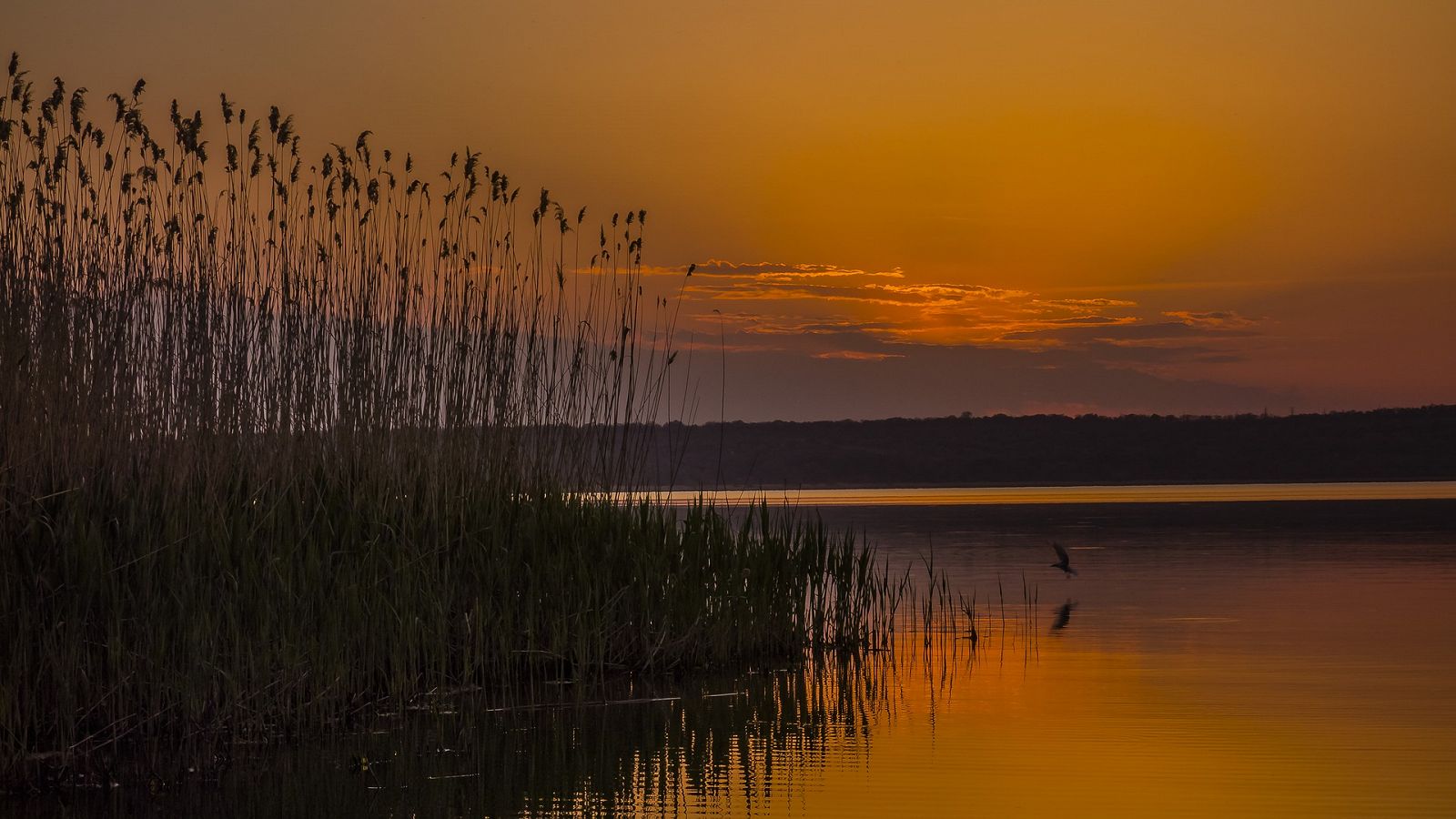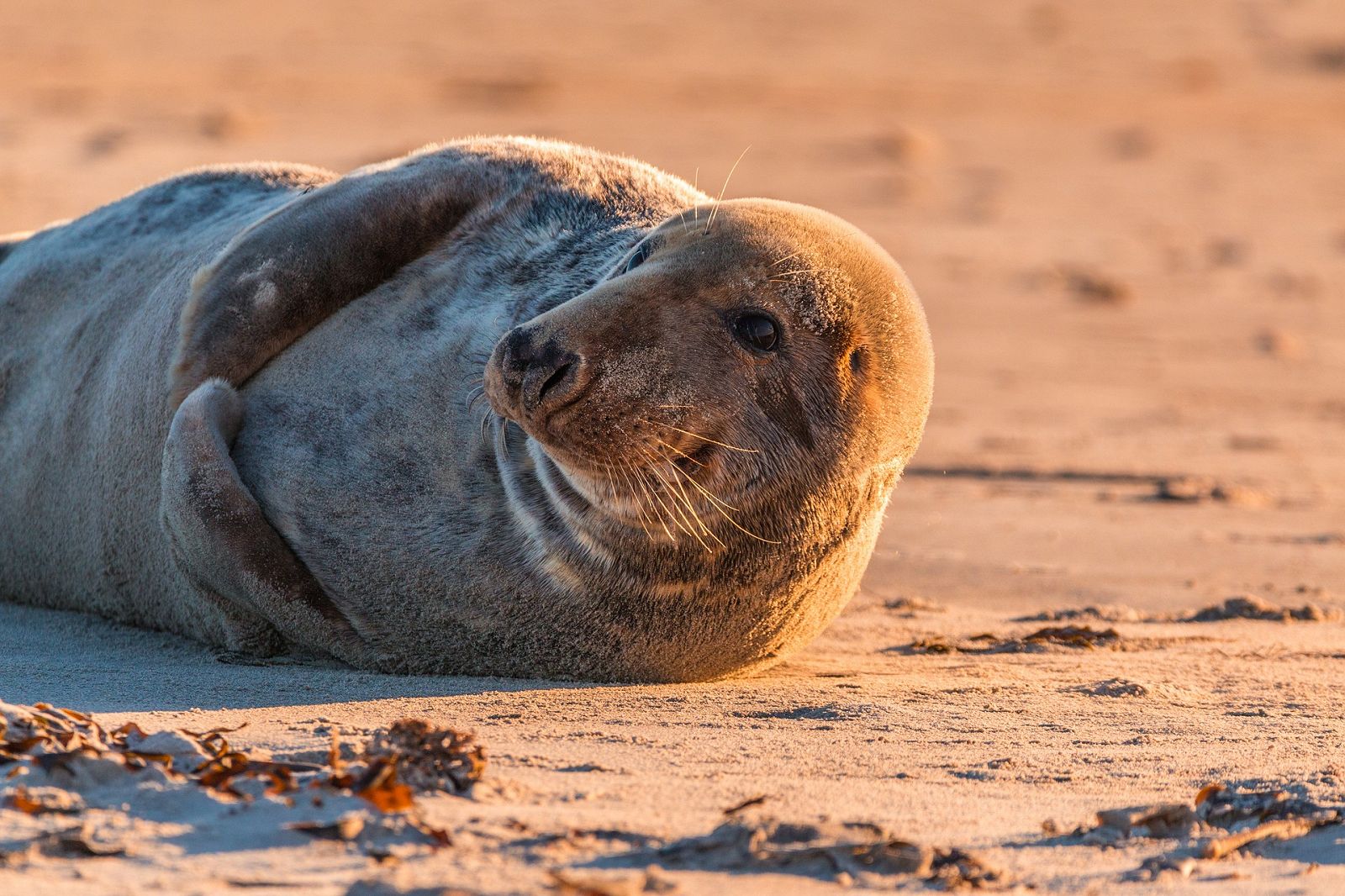British Library Sound Archive - From Dusk Until Dawn

One hour of field recordings made between the hours of dusk and dawn, selected and mixed by Cheryl Tipp, Wildlife and Environmental Sounds Curator at the British Library.
The British Library’s collection of wildlife sounds was established in 1969 when the sound archive was an independent body known as the British Institute of Recorded Sound. Today, the collection has over 250,000 catalogued wildlife and environmental sound recordings covering all classes of sound-producing animals from all zoogeographical regions.
This mix features a selection of field recordings that take the listener on a journey from just before dusk until the dawn of a new day. From a tranquil Turkish soundscape at dusk to an energetic Australian dawn chorus, these recordings focus on species that are usually active when the rest of the world has fallen silent for the night.
Many of the library’s wildlife and environmental sounds are being digitised as part of Unlocking our Sound Heritage, a major preservation and access project supported by a £9.5 m National Lottery grant. The funding will enable the formation of the first ever national network of ten sound preservation centres which will come together with the British Library to save almost half a million rare and unique recordings that are threatened by physical degradation or stored on formats that can no longer be played. Unlocking our Sound Heritage forms part of a core British Library programme, Save Our Sounds, which pledges to preserve the nation’s sound heritage.
Many thanks go to all the recordists for agreeing to have their recordings shared on NTS.
Track 1 – 00:00:00 [British Library collection WA 01/08 reference number 72222, excerpt]
The homeward journey before dusk, recorded by Ian Christopher Todd near Tendaba Camp, The Gambia on 6 October 1997
This recording captures the leisurely atmosphere of a group of workers returning home through the marshes after a day in the paddyfields. Their chatting is set against the gentle rhythms of stridulating insects and the peaceful songs and calls of birds such as Red-eyed Doves (Streptopelia semitorquata) and Northern Red Bishops (Eupletes franciscanus). Ian Todd travelled to The Gambia in 1997 where he spent 1 week recording soundscapes in the country. The rest of Ian’s recordings from this trip can be found in the Environment and Nature section of British Library Sounds.
Track 2 – 00:05:05 [British Library collection WA 12/006 reference number 200093, excerpt]
Turkish soundscape at dusk, recorded by Eloisa Matheu in Kuyuçuk, Turkey on 12 July 2010
As the sun sets over the marshlands of Kuyuçuk, a chorus of frogs and insects come together to form a calm, evening ambience. Aspects of human life are usually absent from the sound archive’s wildlife and environmental recordings, however the call to prayer from the nearby town only enhances the tranquillity of this soundscape.
Track 3 – 00:10:26 [British Library reference number 18532, excerpt]
Common Noctule (Nyctalus noctula) 22 kHz echolocation calls, recorded by Richard Ranft in Kent, England on 3 June 1986
The Common Noctule is one of the largest of the British bats, with a wingspan of around 40 cm. As dusk descends, it is usually the first species to appear from its roost. This recording of Noctules hunting over fields in a Kent woodland was recorded using a heterodyne bat detector which converts ultrasonic calls into signals that are audible to the human ear. Much like other species which echolocate, such as whales and dolphins, bats produce a rapid sequence of ultrasonic clicks which, when received as echoes, allow them to form a 3D image of their surroundings and home in on their insectivorous prey.

Atlantic Grey Seal basking on a beach
Track 4 - 00:12:35 [British Library collection WA 04/32 reference number 145403, excerpt]
Atlantic Grey Seal (Halichoerus grypus) colony, recorded by Alan Burbidge in Lincolnshire, England on 24 November 2002
Every autumn, thousands of Atlantic Grey Seals return to the sand dunes of Donna Nook in order to breed. This particular recording of the breeding colony was made on a still, moonlit night towards the end of 2002. The eerie calls of individuals drift over the dunes and are accompanied by the sounds of breathing, movement and the occasional altercation between two testosterone-filled bulls.
The calls of Atlantic Grey Seals have such a humanlike quality that they were often thought to be the voices of mermaids calling out to passing sailors. Among the rich pages of Scottish and Irish folklore can be found a group of mysterious creatures known as the Selkies, or sealfolk. These ethereal beings took the form of seals when in the sea but, once on land, had the power to shed their seal skin and transform into a man or a woman. Their beautiful music and enticing singing voices could often be heard rising up from an isolated beach or cove, which just happens to be the perfect habitat for basking seals!
Track 5 - 00:18:22 [British Library collection WA 04/32 reference number 145681, excerpt]
Manx Shearwater (Puffinus puffinus) calls and wing sounds, recorded by Alan Burbidge on Skokholm Island, Wales on 3 June 1998
The Manx Shearwater is a nocturnal seabird that nests in underground burrows on remote offshore islands. Around 90% of the world’s population can be found on islands around the British Isles. The major hotspots are the Welsh islands of Skomer and Skokholm, as well as the Scottish island of Rum, which have all been designated as Sites of Special Scientific Interest because of their biological significance. Most at home out at sea, these ungainly birds begrudgingly coming ashore for a couple of months every year in order to breed. It is at this time that they produce their bloodcurdling cries, as if expressing their absolute displeasure at having been forced ashore. Many a camper, anticipating a silent night beneath the stars, has been left shivering in their tent thanks to the hair-raising wails of these night-loving birds.
Track 6 – 00:21:12 [British Library collection WA 12/018 reference number 201326, excerpt]
Night in the Várzea Forest by Boat, recorded by Ian Christopher Todd near Leticia, Colombia on 24 February 2009
The Amazon is a noisy place, even after dark. This recording was made on a boat on the Amazon River in Colombia; the rattling calls of Giant Marine Toads (Bufo marinus) can be heard alongside the calls of other frogs and toads. Distant, unknown sounds occasionally emerge from the darkness beyond.
Track 7 – 00:27:37 [British Library collection WA 04/32 reference number 145033, excerpt]
Corncrake (Crex crex) calls, recorded by Alan Burbidge on North Uist, Scotland on 27 May 1997
The secretive Corncrake gets its scientific name from the repetitive ‘crex crex’ call that males produce during the breeding season. This call can be repeated a staggering 20,000 times a night and is used to establish territories, deter potential rivals and attract females.
Once widespread across the UK, the Corncrake suffered significant population declines during the 20th century so that, by the 1990s, the species only bred on a handful of Scottish islands. The decline was caused by changes in farming practices, however a successful conversation programme has meant that numbers are beginning to recover.
Track 8 – 00:29:36 [British Library collection WA 06/01 reference number 146241, excerpt]
Red Deer (Cervus elaphus) stag roars, recorded by Alan Burbidge in Leicestershire, England on 22 October 2000
The Red Deer is Britain’s largest land mammal. This native species migrated from Europe to Britain around 11,000 years ago and played an important role in the lives of hunter-gatherer communities who hunted the deer for food, skins and tools. Male stags in their prime are a sight (and sound) to behold, standing around 2 metres high and weighing in at over 200kg. During the breeding season, or rut, which takes place in autumn, stags produce a range of roars and bellows that can be heard throughout the day and night. As roaring is a sign of strength and dominance, a stag that can produce powerful, sustained roaring has a much better chance of intimidating potential rivals and maintaining hold over females in his harem.

Common Pipistrelle in flight (photo courtesy of Barracuda1983, CC BT-SA 3.0)
Track 9 – 00:32:51 [British Library reference number 26131, excerpt]
Common Pipistrelle (Pipistrellus pipistrellus) 50kHz echolocation calls, recorded by Richard Ranft in Kent, England on 4 May 1988
As its name insinuates, the Common Pipistrelle is the most commonest and widespread of all the British bat species. This recording captures the erratic echolocation trails of a group of individuals hunting for insects over the edge of a freshwater lake. Weighing less than a £1 coin, an average adult pipistrelle can consume over 3000 insects in a single night.
Track 10 – 00:35:35 [British Library collection WA 10/024 reference number 170982]
Tawny Owl (Strix aluco) hoots, recorded by Simon Elliott in Northumberland, England on 2 December 2001
The characteristic hoot of the Tawny Owl can be heard in woodlands across mainland Britain. This instantly recognisable sound is sometimes reflected in traditional folk names; in Shropshire the Tawny Owl was traditionally known as a Billy Hooter while in Cheshire the bird was known locally as a Hill Hooter. In the north of England the named changes again to become Jenny Howlet. Wherever you are in the country, the best time to hear a Tawny Owl is after dusk in autumn and winter when males are establishing their territories.
Track 11 - 00:37:50 [British Library collection WA 12/018 reference number 201299, excerpt]
A petrel nightscape, recorded by Ian Christopher Todd on Skokholm Island, Wales on 5 June 1998
Here we listen in on a pair of Storm Petrels (Hydrobates pelagicus) in a burrow on the Welsh island of Skokholm. The harsh, purring call is composed of between 30-40 individual notes per second and has an almost hypnotic rhythm. The regular, hiccup-like ‘chikka’ calls which break up the purring allow the vocalising bird to take a breath before the next sequence begins.
Every spring around 2,500 pairs return to Skokholm from their South African wintering grounds in order to breed. Because of their small size (they are only slightly larger than a House Sparrow) they are often found sharing burrows with rabbits or other seasonal visitors such as the much larger Manx Shearwater.
Track 12 – 00:43:21 [British Library collection WA 09/025 reference number 111513, excerpt]
Dehesa freshwater atmosphere, recorded by Phil Riddett in Extremadura, Spain on 13 May 2009
A chorus of Iberian Water Frogs (Rana perezi) and Two-spotted Crickets (Gryllus bimaculatus) dominate this nocturnal riverside atmosphere recorded in the Iberian Peninsula. The rubbery calls of the frogs join the high-pitched chirps of the crickets to create a soundscape that is typical of a freshwater environment after dark.
Track 13 – 00:48:01 [British Library collection WA 07/017 reference number 129823, excerpt]
Nightingale and mail plane, recorded by Ian Christopher Todd in Hortobágy National Park, Hungary on 3 May 2003
Though songbirds usually fall silent once darkness has fallen, there are a few exceptions to the rule. The Common Nightingale (Luscinia megarhynchos) is one such example. In this recording, made just before dawn in Hungary’s Hortobágy National Park, the silence is broken by the vigorous song of a male nightingale. Our songster is temporarily accompanied by a night mail plane which passes overhead before fading into the distance.
Track 14 - 00:53:22 [British Library collection WA 06/09 reference number 163074]
Iron Range dawn chorus, recorded by Tony Baylis in Queensland, Australia on 19 November 2005
The programme draws to a close with an Australian dawn chorus that is full of energy and renewal. Recorded in Queenland’s Iron Range National Park, this early morning salutation to the new day includes the songs and calls of birds such as the Wompoo Fruit Dove (Ptilinopus magnificus), Yellow-spotted Honeyeater (Meliphaga notata), Superb Fruit Dove (Ptilinopus superbus), Magnificent Riflebird (Ptiloris magnificus) and Buff-breasted Paradise Kingfisher (Tanysiptera Sylvia).
